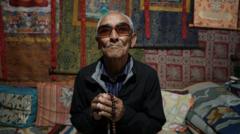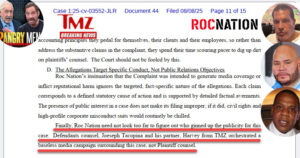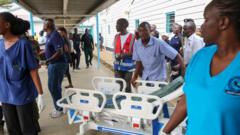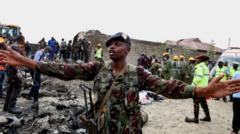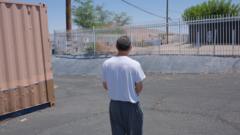Senait Mebrehtu lost her 14-year-old daughter as she undertook a perilous journey to escape Eritrea through a smuggling network, underscoring urgent calls for awareness about the risks involved.
Tragic Drowning Highlights Risks of Migrant Smuggling in Kenya
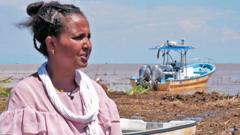
Tragic Drowning Highlights Risks of Migrant Smuggling in Kenya
A mother's grief reveals the dangers of current human trafficking routes through Lake Turkana.
As the sun dipped below the horizon, Senait Mebrehtu sat by the shores of Lake Turkana, overwhelmed by sorrow as she tossed flowers into the waters in memory of her daughter Hiyab, who tragically drowned while attempting to migrate to Kenya. Hiyab, just 14, had embarked on this perilous journey along with her sister, who narrowly survived the harrowing crossing. Senait's heart broke further as she expressed, "If the smugglers had informed me of the dangers associated with this lake, I would never have allowed my daughters to venture so far."
Three years prior, Senait, an Eritrean Pentecostal Christian, had fled her homeland in search of asylum. Arriving in Kenya on a tourist visa, she had left her older daughters behind, fearing they would be conscripted into military service in Eritrea, known for its authoritarian regime and prolonged national service often involving forced labor. Following relentless pleas from her teenagers, Senait reluctantly reached out to relatives who arranged for smugglers to facilitate their escape.
These smugglers led Hiyab and her sister on a treacherous weeks-long journey that involved navigating through Northern Ethiopia and finally to Lake Turkana, the world’s largest permanent desert lake. One smuggler confirmed to BBC that Lake Turkana is increasingly being used as a route for migrant crossings, dubbing it the "digital route" due to its novelty.
With Kenya tightening security protocols on mainstream land routes, smugglers are adapting by employing risky lake traverses. The smuggler estimated earning about $1,500 per migrant, revealing an extensive smuggling network spanning Kenya and beyond that predominantly caters to desperate individuals escaping Eritrea, Ethiopia, and Somalia. She voiced her concern, saying, "I wish to advise migrants to remain in their home countries," acknowledging the peril inherent to the journeys, which often lead to devastating outcomes.
Osman, an Eritrean who witnessed Hiyab’s boat capsize, recounted the devastating scene when the boat carrying her and others succumbed to strong winds. Tragically, seven people, including Hiyab, lost their lives in a single misadventure attributed to the operator's negligence of overloading the craft.
Ms. Mebrehtu held the smugglers accountable for her daughter's death, emphasizing the reckless choice to overcrowd their vessel. Fishermen in the region reported recovering the bodies of several migrants, hinting at the grim reality of this hazardous journey.
The UNHCR has reported staggering numbers of Eritrean refugees in East Africa due to the continuous conflict and oppression in Eritrea. Advocacy from lawyers and activists highlighted that both Kenya and Uganda have emerged as vital refugee havens amid regional turmoil, despite ongoing risks present in smuggling networks, which often involve inhumane conditions and exploitation.
Despite the heartache, Ms. Senait remains grateful that her elder daughter survived the ordeal. "We are living through what every Eritrean family faces," she lamented, as she prayed for peace in her homeland. As authorities struggle to combat growing smuggling operations, Senait's story serves as a poignant reminder of the risks migrants face while seeking safer futures.







